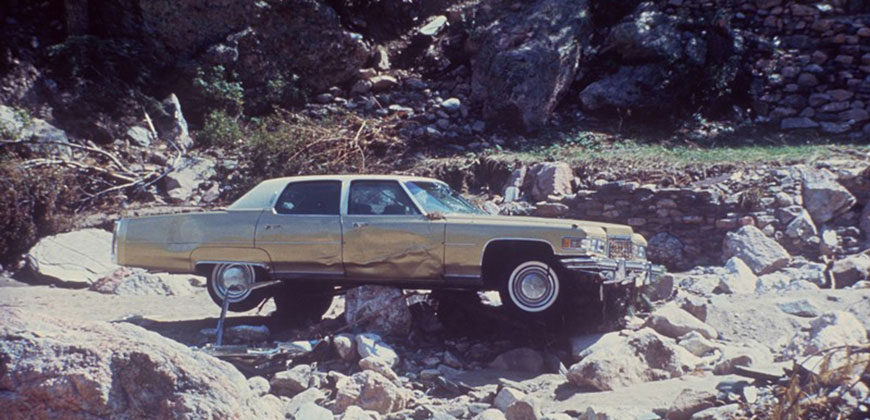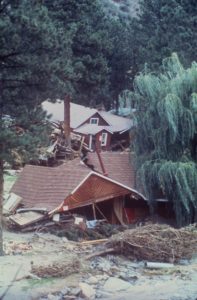
From the David McComb Big Thompson Flood Collection in the CSU Water Resources Archive
Forty years after the worst natural disaster in Colorado’s recorded history, weather and public safety experts will gather to commemorate lives lost, while also discussing flood safety.

Nolan Doesken, Colorado State Climatologist based at Colorado State University, will join state, National Weather Service, National Oceanic and Atmospheric Administration (NOAA) and U.S. Geological Survey (USGS) officials for a public commemoration of the Big Thompson Canyon flood. It will take place July 29, 10-11:30 a.m. at the Sylvan Dale Guest Ranch in Loveland.
On July 31, 1976, the Big Thompson Canyon flood devastated Loveland and the surrounding area, killing 143 people and causing untold injury and damage. It happened during the state of Colorado’s centennial celebrations, when 12-14 inches of rain fell over a four-hour period in the mountains below Estes Park, according to the USGS.
“Thousands of people were out camping, visiting, touring – you name it – when the storm exploded that evening,” Doesken said.
40th anniversary exhibit
The Water Resources Archive in Morgan Library, Room 202, has on display the exhibit, “Reacting to Disaster: Voices of the 1976 Big Thompson Flood,” through Sept. 30.
Flooding on the Front Range
Doesken will speak on climatological factors contributing to inevitable flooding of the Colorado Front Range. Others will discuss how residents can exercise safety during flash flooding, as well as improvements in weather forecasting since the time of the Big Thompson flood.
The event will also commemorate a more recent Big Thompson Canyon flood, caused by massive, prolonged rain in September 2013. That flood claimed fewer lives, and destroyed many establishments including the Visenz-Smith Park, where the 30th anniversary remembrance of the Big Thompson flood of 1976 was held, according to the USGS.
Forecast this week
The forecast for this week calls for little risk of flooding, Doesken noted. “But historically this is a very active time of year, with many anniversaries of other killer storms near the end of July in northern Colorado,” he said.
These include, according to Doesken: 1951, 1976, 1977, 1979 (a large hail storm in Fort Collins), 1985 (a flash flood in downtown Cheyenne), and the 1997 Fort Collins Spring Creek flood that inundated the CSU campus.
For more information on the event, contact Theo Stein at NOAA.